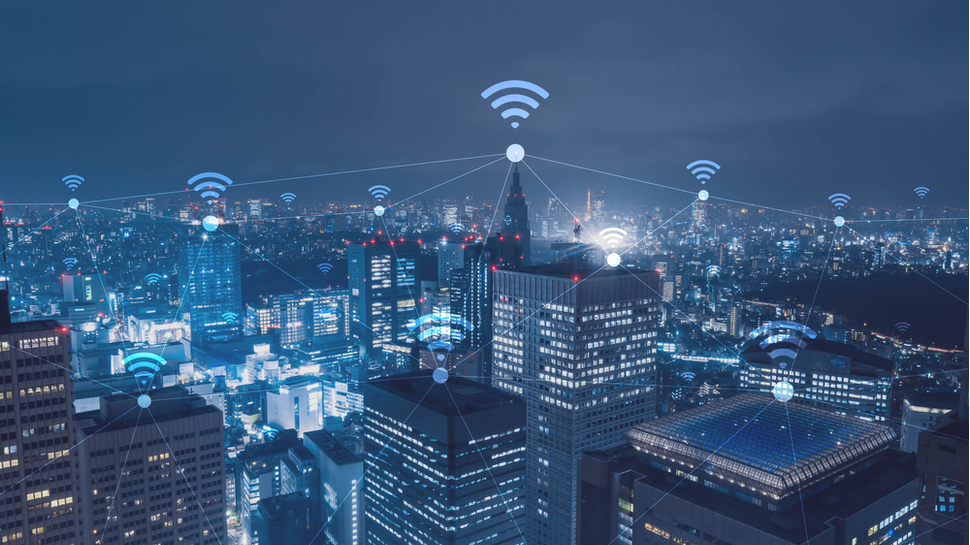Wi-Fi 7 is the next generation of wireless connections. It’s already here and it offers incredibly fast connections in personal, office, and commercial environments. Not only that, but it also brings with it several new features that should appeal to those who are looking to upgrade their connection.
The technology behind Wi-Fi 7 truly feels next-gen, and there are plenty of reasons to make the jump. However, there are also downsides to consider, chiefly concerning the price of admission; you’ll need to pay for the next-gen connection and also shell out for one of the best Wi-Fi routers that can handle it.
The Wi-Fi Alliance has spoken at length about the benefits of Wi-Fi 7, but below is a summary of what you can expect if you make the jump.

Wi-Fi 7: cut to the chase
- What is it? Wi-Fi 7 is a wireless technology that continues to use the 6GHz spectrum to boost internet speeds even further.
- When is it out? It is currently available now in the US, UK, Australia, Japan, and Mexico. However, it still needs regulatory approval in many other countries.
- What will it cost? The cost will depend on the router you buy. The cheapest options are likely to be those provided by your internet service provider, but you may have to spend more than $1,000 / £1,000 (approximately AU$1,500) for the very best Wi-Fi 7 mesh routers.
Wi-Fi 7 release date
Wi-Fi 7 was officially released on January 8, 2024, when the Wi-Fi Alliance released its Wi-Fi Certified 7 program, though it’ll still take years for a significant amount of people to adapt to it. According to the Wi-Fi Alliance, 233 million devices are expected to enter the market in 2024, growing to 2.1 billion devices by 2028.
The Alliance also states that smartphones, PCs, tablets, and access points (APs) are expected to be the earliest adopters of Wi-Fi 7, while customer premises equipment (CPE) and augmented and virtual reality (AR/VR) equipment will follow.

Wi-Fi 7 routers and pricing
The first wave of Wi-Fi 7 routers vary greatly in price, depending on the manufacturer and model.
Some relatively affordable routers, such as the TP-Link Archer BE800, cost as little as $300, while others can set you back as much as $1,000 or more. There are also leased routers that internet providers often give you, however, those can come with an additional monthly costs to your internet bill in return.
In-between you’ll find the likes of the Netgear Nighthawk RS700S, which costs $699 / £799 / AU$1,499; you can find out more about that in our Netgear Nighthawk RS700S review. Spoiler: we love it. There’s also the Amazon eero Max 7 router, which will set you back $599 / £599 (not currently available in Australia).
Meanwhile, Acer revealed its two Predator Connect gaming routers at CES 2024. The Predator Connect T7 supports Wi-Fi 7 tri-band, which provides wider home coverage.

Wi-Fi 7 spec and performance
The Wi-Fi Alliance detailed the specs and performance of Wi-Fi 7. The first is the introduction of 320MHz channels, which are double the size of 160MHz channels. However, though their larger bandwidth results in incredibly fast speeds, they can only be used within countries that allow for access to the 6GHz band. So far those include the US, UK, Australia, Japan, and Mexico, though a full list is available here.
There’s also MLO or Multi-Link Operation. This allows devices on a network to transmit and receive data across multiple bands (mainly 2.4GHz, 5GHz, and 6GHz) at the same time. It results in more reliable service, higher latency, and high throughput. This is especially important for VR headsets, as receiving a stream on a 6GHz band while transmitting tracking information on a 5GHz band would make for optimal performance.
Another potential benefit for VR is deterministic latency, which lets devices know when to expect connection interruptions and which could make for better tracking. There’s also 4K QAM (Quadrature Amplitude Modulation), which sends 20% more data than the current 1024 QAM standard.
Finally, Wi-Fi 7 is backwards compatible with other Wi-Fi types, so older laptops will be able to connect to the new standard. Note, though, that they may not be able to access the faster speeds Wi-Fi 7 offers, so make sure you check your devices’ Wi-Fi capabilities before investing in a new router.




















+ There are no comments
Add yours